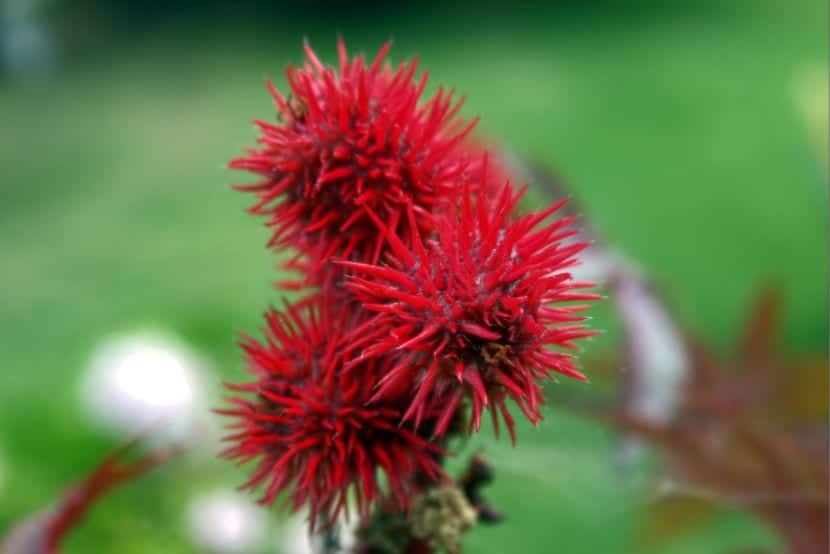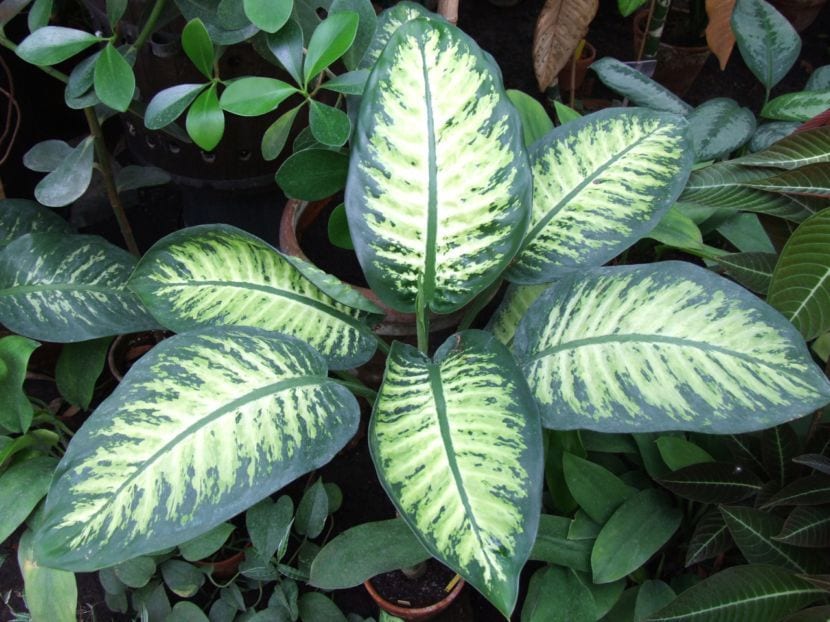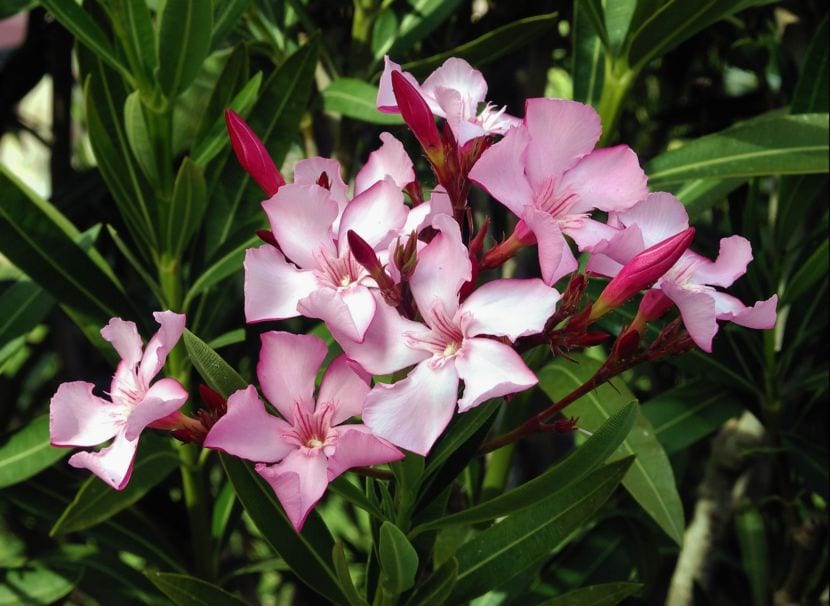
Author: Xosema
All plants are useful for some animal, since they are all part of the great family called biodiversity or better known as nature. But it is also true that there are some plant species that, rather than avoiding them, we advise that you inform yourself well about them to avoid scares. That is why we are going to introduce you to a series of plants, very easy to find in nurseries, but it is advisable to be alert and not buy them if we live with animals and / or have children.
They are beautiful, highly ornamental, relatively easy to grow and maintain. Some of them are used as indoor plants, others to border garden paths, others can be used for Bonsai,… We will tell you everything below.
Dieffenbachia

Well-known plant used especially indoors, it is native to tropical America. Suitable for rooms with lots of natural light. It grows to a height of 40cm, with long leaves and a very visible midrib, dark green at the edges and a lighter green in the center.
The whole plant is poisonous. If ingested it can cause swelling of the tongue and cause suffocation.
Oleander

The Oleander, whose scientific name is nerium oleander, is a shrubby plant up to 3-4 meters high, with long, lanceolate green leaves. Its flowers can be pink, red or white. Suitable for bonsai. It is native to the Mediterranean, but today it can be found in any hot-arid climate due to its great adaptability and rusticity (it can withstand mild frosts without problems). Its cultivation is simple, needing water only the first year in which it is planted in the garden.
All parts are toxic, especially for the heart, causing arrhythmias, tachycardia, atrial fibrillation. It can also lead to seizures, nausea, gastrointestinal problems.
Rhododendron

The genus Rhododendron includes many species, including the gorgeous azalea. They are shrubby plants mainly native to Asia, specifically China and Japan. They are characterized by having lanceolate dark green leaves, more or less short, and beautiful flowers of various colors (red, pink, white ...).
These plants are especially toxic to horses, which can have serious problems within hours of ingesting their leaves. Although in general they tend to avoid them if they have other types of plants at their fingertips.
Cala

Calla Lilies, whose scientific name is Zantedeschia aethiopica, are bulbous plants whose flowers are very curious and elegant, up to 150cm tall, generally white in color, but nowadays they can be found in other colors and sizes. It is native to South Africa, where it lives in humid and shady areas. It is an ideal plant to have in pots or planters together with other bulbous plants, or near ponds.
Its toxicity is found in the sap, which can cause irritation, vomiting, gastrointestinal problems and nausea.
Although they can be plants harmful to health, it is important to remember that it is necessary to know it and take the necessary measures to avoid dislikes. But this does not mean rejecting them; that is, if the necessary precautions are taken, why not have any of them?
What do you think?
Most people think that there are not many poisonous or toxic plants, but the reality is that there are more than we can imagine. An example of this is, some bushy specimens of Brugmansia that exist in some public gardens. One of them located in the heart of Valencia.
I think it's perfect to enjoy the beauty of any toxic plant, as long as we have adequate information on the precautions that we must take in each case.
Hello Francisco.
Yes, you have to know the plants we grow so that no problems arise.
regards
Good.
The castor bean image used in the header of the article is associated with a Creative Commons BY-SA license such that it can be used freely, even for commercial purposes, in exchange for citing its authorship. The original is in
https://commons.wikimedia.org/wiki/File:Ricino_-_01.jpg
Can you indicate authorship somewhere, like a caption?
A greeting.
I want to know
which are the harmful plants